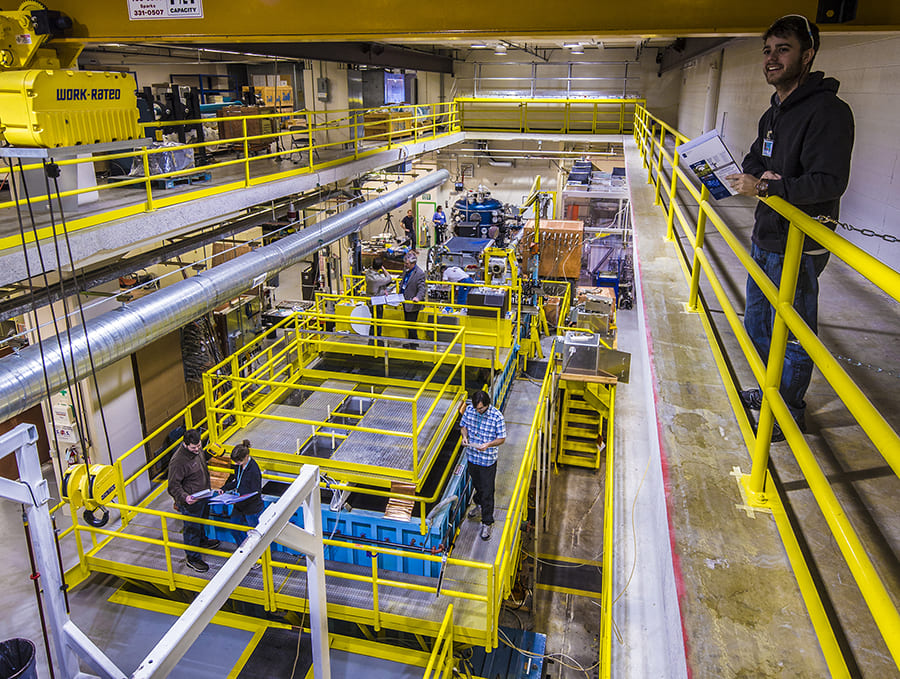I recorded a podcast!
In this episode of Sagebrushers, University of Nevada, Reno President Brian Sandoval speaks with Associate Professor Thomas White. White researches space not by gazing at the sky, but by replicating[…]
Read moreCongratulations Landon
Congratulations to Landon Morrison for being awarded a Mission Support and Test Services (MSTS) Undergraduate Research Fellowship. Landon will be working with our group on hydrodynamic simulations of our OMEGA[…]
Read moreThree physicists at the UNR receive grants for high-energy-density plasma research!
We are so excited to be one of three groups at UNR awarded grants in plasma research from the DOE/NNSA high-energy-density program. Read more about our research here!
Read moreHigh Energy Density Physics
High Energy Density Physics is the study of matter at pressures above 1 Mbar, or around 1 Million atmospheres. Such matter is common throughout the universe, existing in planetary interiors (both solar- and exo-planets), the crusts of neutron stars and during the path to inertial confinement fusion.
Photo Credit: NASA/JPL-Caltech
Warm Dense Matter
This compressed state is typically defined by temperatures of tens of thousands of Kelvin and densities comparable with those of solids. It is a complex state of matter where multi-body particle correlations and quantum effects must be considered. With relatively few observational data points we much turn to both simulations and experiments to understand their properties. For example: What is the pressure at the center of Jupiter? What is the sound-speed or viscosity at the center of Trappist-1e? An Earth-sized exo-planet just 40 light-years away!
Inertial Confinement Fusion
Inertial confinement fusion efforts use high-powered lasers to compress small captules of Deuterium and Tritium to extremely high densities. These capsules reach temperatures in excess of 100 million degrees Celcius and, for a very small period of time, a mini version of a star is created. The goal of all this work is create an unlimited, clean energy source here on earth that can help us deal with the dwindling supply of fossil fuels and other natural resources.
Laboratory Astrophysics
In laboratory astrophysics we recreate an aspect or phenomena of an astrophysical situation in the lab. By creating thse space plasmas here on Earth they can be studied in great detail. Our findings aid our interpretation and understanding of both observational and computational astrophysics.
Photo Credit: NASA/JPL-Caltech/UCLA
Supersonic Turbulence
In our most recent work we investigated the statistical properties of supersonic turbulence; the faster-than-sound stochastic motion of the plasma. Understanding how these plasmas behave informs our understanding of molecular clouds and the processes within, including star formation.
More DetailsHigh-Powered Lasers
On Earth, we can generate high energy density states of matter using high-powered lasers. These lasers rapidly deposit large quantities of energy into an extremely small area and, on a nanosecond timescale, are capable of reproducing a multitude of astrophysical situations. We perform experiments on table-top laser facilities here at UNR, the larger laser in the world – the National Ignition Facility, and the three kilometer long next generation light source – LCLS.
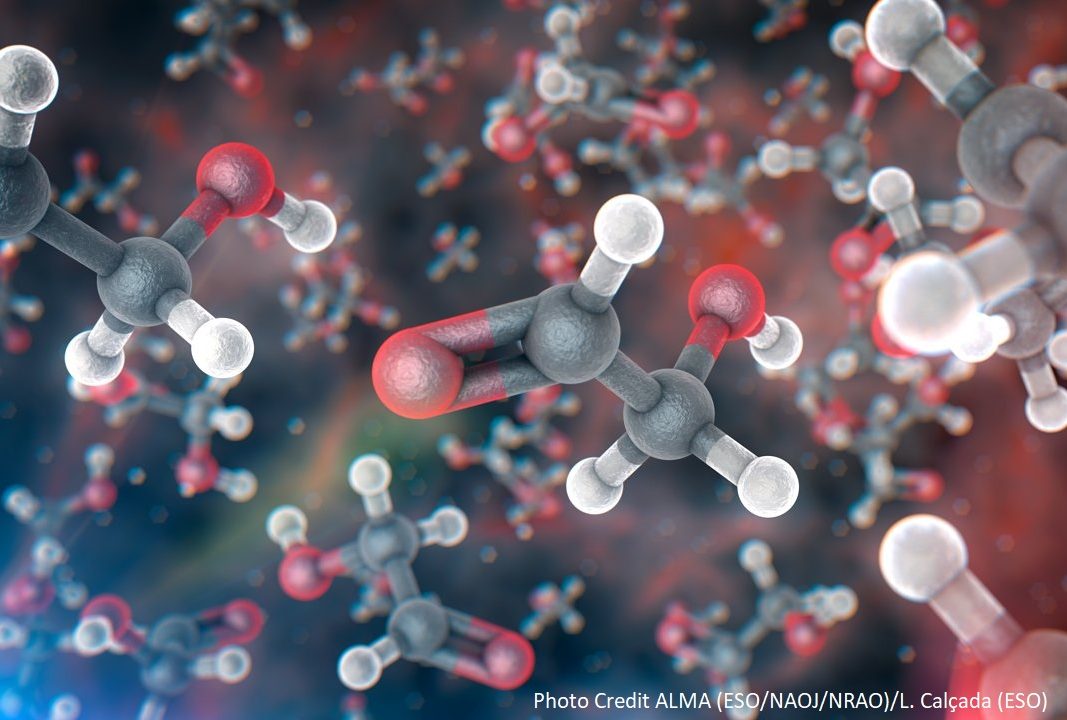
Numerical Simulations
In order to model our experimentals we perform a number of simulations across a range of temporal and spatial scales. Atomistic simulations that employ molecular dynamics are capable of following the trajectory of every particle. If we attempt to treat the electron fully quantum mechanically, such as in Density Functional Theory or Wave Packet Molecular Dynamics, we are limited to systems of just a few hundred ions, even when utilizing highly parallelized high-performance computing systems. Classical simulations employ the Born-Oppenheimer approximation to avoid treating the electrons, but in doing so are able to treat systems consisting of a few millions atoms. However, this still represents micron sized systems, around 1/100th of the size of a human hair. To model even larger systems we must resort to continuum methods such as magneto-hydrodynamics.
Recent Publications
1. R. Davis et al., Ion Modes in Dense Ionized Plasmas through Non-Adiabatic Molecular Dynamics (2020) 2. B. Larder, D. O. Gericke, S. Richardson, P.Mabey, T. G. White and G. Gregori, Fast nonadiabatic dynamics of many-body quantum systems, Science Advances 5(11), eaaw1634 (2019) 3. T. G White, M. Oliver, P. Mabey, et al., Supersonic plasma turbulence in the laboratory, Nature Communications 10(1), 1758 (2019) 4. E. E. McBride, T. G. White et al., Setup for meV-resolution inelastic X-ray scattering measurements and X-ray diffraction at the Matter in Extreme Conditions endstation at the Linac Coherent Light Source, Review of Scientific Instruments 89(10), 10F104 (2018)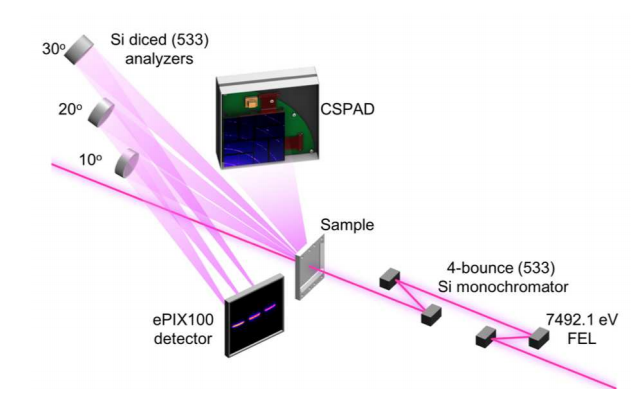
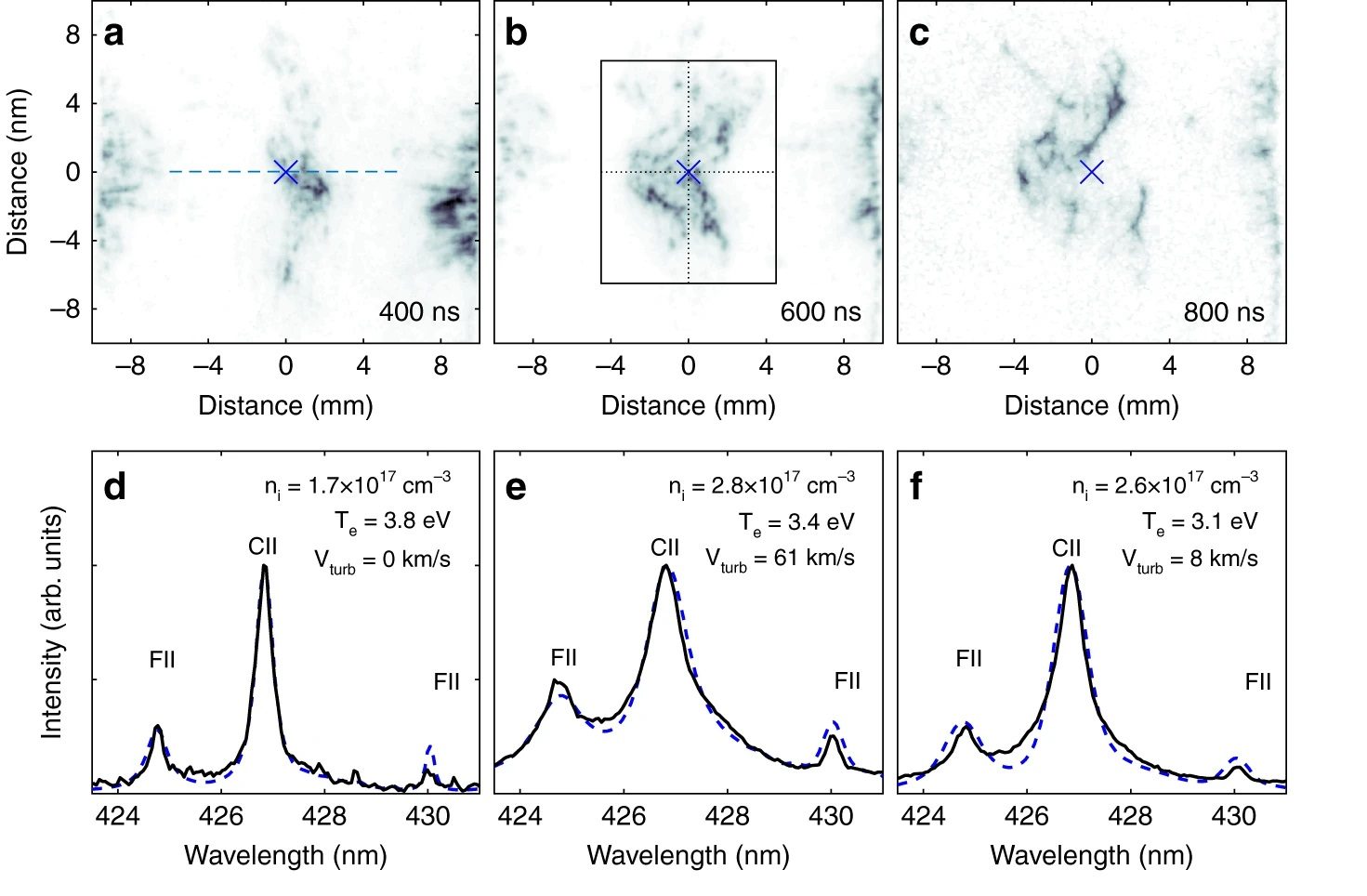
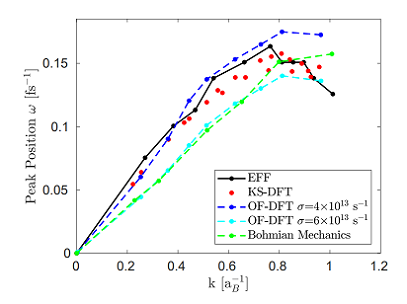
Talks, podcasts, and outreach
Dr Thomas White discussing Explosions, Lasers and Supernova at a recent happy hour with a scientist event in the Laughing Planet Restaurent in Reno, NV. Payment for this event was a free beer (shown in the bottom left of the photo).
College of Science Inaugural Podcast: Over 100 years after Einstein predicted gravitational waves, LIGO scientists confirmed their existence with precise detectors. Listen to LIGO physicist Dr. Gabriela González discuss the discovery, lasers in space, and science communication with Physics professors Drs. Richard Plotkin and Thomas White
Sagebrushers S3E4: In this episode of Sagebrushers, University of Nevada, Reno President Brian Sandoval speaks with Associate Professor Thomas White. White researches space not by gazing at the sky, but by replicating astrophysical conditions in the laboratory, effectively creating mini-planets and stars.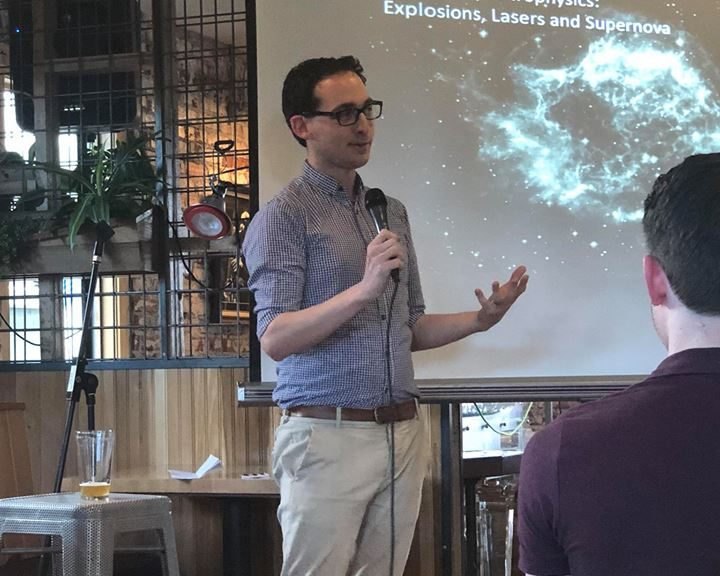
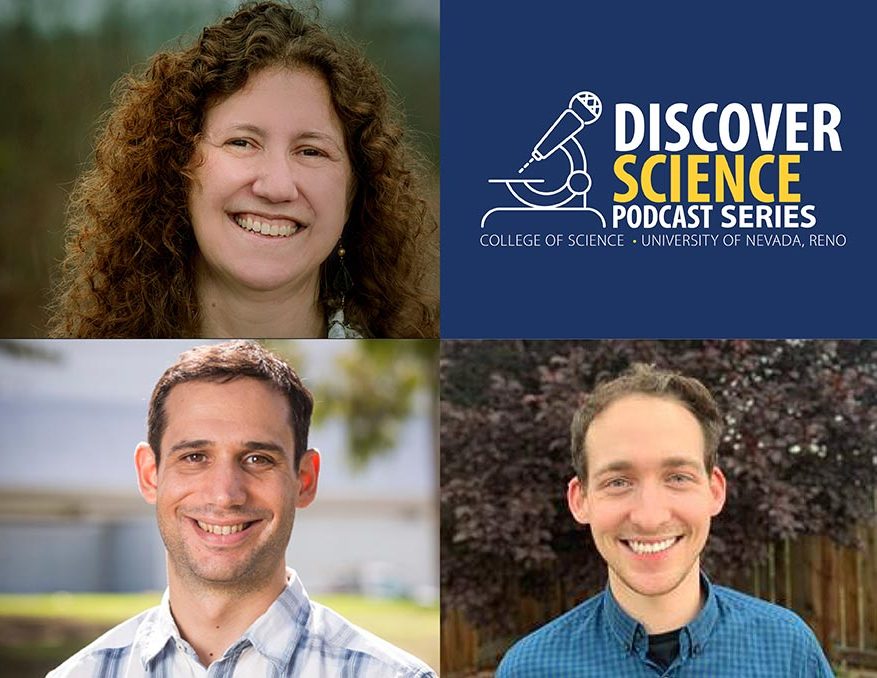
Our Team
Here’s our (slightly early) end-of-semester meal to celebrate everyones achievements.

From Left: Thomas White, Daniel Haden (Post Doc),Travis Griffin (Grad), Alex Angermeier (Grad), Michael Russo (UG), Landon Morrison (UG), Ava Miller (UG), Sarah Shores (Grad), Cameron Allen (Grad)
Explore Our Gallery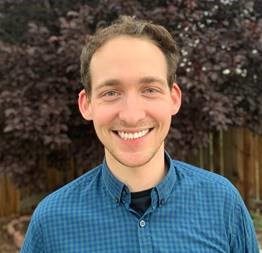
Thomas White
Assistant Professor
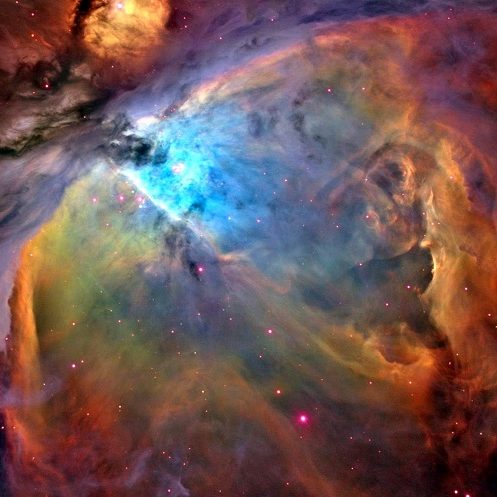
Alex Angermeier
Graduate Student
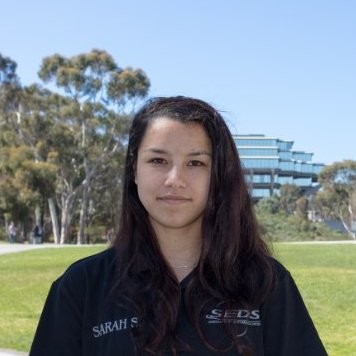
Sarah Shores
Graduate Student

Travis Griffin
Graduate Student
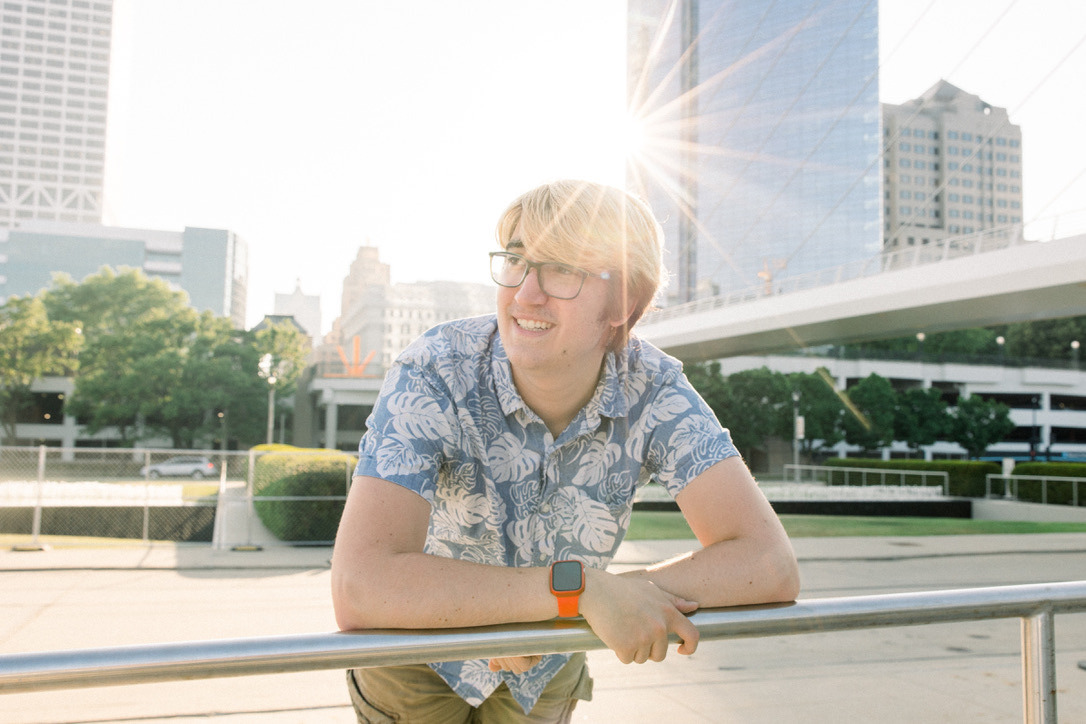
Trevor Smith
Graduate Student

Jason Desjardin
Undergraduate Student

Jaya Sicard
Undergraduate Student


